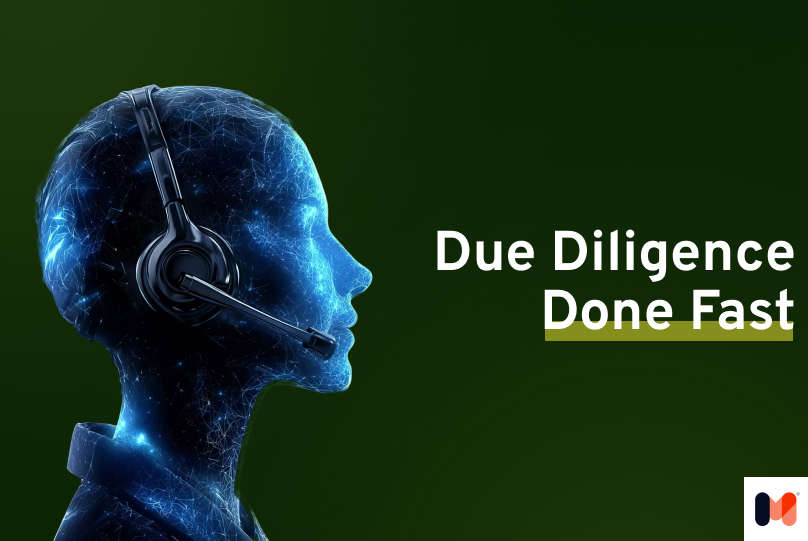Introduction
As the CEO of Mobile Reality, a company specializing in custom software development, I’ve spent years navigating the challenging world of lead generation. Like many in our industry, I’ve faced the frustration of building a reliable sales pipeline, dealing with the inefficiencies of traditional lead generation methods, and watching countless hours go into manual processes that yielded inconsistent results.
For years, the process of identifying, qualifying, and reaching out to potential clients felt like trying to find a needle in a haystack. Despite having a talented team and innovative services tailored to industries like fintech, proptech, and entertainment, generating high-quality leads was often a bottleneck to scaling our business. But everything changed when we embraced automated lead generation.
By leveraging AI-driven tools and cutting-edge automation workflows, we transformed how we approach lead generation. We replaced manual labor with automated processes that not only saved us time but also ensured better targeting and personalization. Today, we’re capturing leads, enriching data, and launching personalized outreach campaigns with incredible efficiency—all while scaling our efforts to meet growing demand.
This article is a result of my journey, sharing the insights I’ve gained along the way. I’ll walk you through how automated lead generation has disrupted traditional business processes and allowed us to achieve remarkable results, using our real-world workflows as an example. Whether you’re struggling with inefficiencies or looking to future-proof your business, this article will show you how to harness the power of automation to take your lead generation strategy to the next level.
What is the sales lead generation process?
At its core, lead generation is the process of identifying potential customers who may be interested in your products or services and nurturing them until they are ready to make a purchase. It’s an essential part of any business’s sales strategy, ensuring a steady pipeline of prospects who can eventually become loyal clients.
For companies like Mobile Reality, specializing in custom software development for industries like fintech, proptech, and entertainment, lead generation is not just important—it’s critical to staying competitive in a fast-paced market.
The challenges of traditional lead generation
Before we adopted automated lead generation, our team relied heavily on traditional methods like manual research and cold calling. These approaches were:
Time-Consuming: Hours were spent compiling contact lists and researching potential leads.
Inefficient: Many leads lacked quality, resulting in low conversion rates.
Difficult to Scale: As our business grew, manually handling increasing lead volumes became unsustainable.
Despite our efforts, these methods often failed to provide the scalability and personalization needed to engage modern customers effectively. Despite our efforts, these methods often failed to provide the scalability and personalization needed to engage modern customers effectively.
The shift to automated lead generation software
The limitations of traditional methods led us to explore lead generation automation, a modern approach that leverages technology to streamline the process. By adopting generation automation, we were able to:
Save Time: Automating repetitive tasks like data collection allowed our team to focus on meaningful client interactions.
Increase Efficiency: Automation tools delivered real-time insights into potential leads, helping us prioritize high-value opportunities.
Personalize Outreach: AI-powered systems enabled us to tailor messaging to each lead, improving engagement and conversion rates.
The role of automation in lead generation
The introduction of automated lead generation revolutionized how we approached our sales pipeline. By integrating tools that automatically capture, enrich, and qualify leads, we eliminated inefficiencies and improved results. Automation also empowered us to:
Scale Lead Generation Efforts: We no longer needed to increase manpower to handle growing lead volumes.
Create Seamless Workflows: Combining platforms like Leadinfo, PhantomBuster, and Lemlist allowed us to build a comprehensive, end-to-end lead generation automation process.
Achieve Better Results: By leveraging automation, we turned lead generation from a bottleneck into a competitive advantage.
Why lead generation matters for every business
Whether you’re a startup or a large corporation, having a reliable lead generation system is essential to sustaining growth. By adopting generation automation, businesses can:
Stay competitive in crowded markets.
Drive better ROI on marketing and sales efforts.
Engage prospects more effectively with personalized outreach.
At Mobile Reality, our journey to adopt automated lead generation resolved long-standing challenges and set the stage for scalable, efficient growth. In the next section, I’ll share how automation has enhanced our process and break down the exact workflows we use to achieve these results.
How does automation enhance lead generation?
The rise of automated lead generation has transformed how businesses capture, qualify, and engage with potential customers. For Mobile Reality, adopting lead generation automation enabled us to streamline processes, scale efficiently, and deliver personalized outreach at scale. Let’s explore the key ways automation enhances the lead generation process with our step by step guide.
1. Saving Time with Automation
The biggest advantage of automated lead generation is its ability to eliminate repetitive, time-consuming tasks. Tools like Leadinfo automatically capture company data from website visitors, ensuring no potential leads are overlooked.
At Mobile Reality, we replaced hours of manual research with:
Automated Data Capture: Leadinfo collects information like company name, domain, and industry.
Real-Time Insights: Automation allows us to act on lead data instantly, speeding up the sales cycle.
This foundational step in lead generation automation has saved us countless hours while ensuring consistent, high-quality data.
2. Scalability for Growing Businesses
Manual processes limit how many leads you can handle, but generation automation enables businesses to scale without adding resources. By integrating tools like PhantomBuster and Google Sheets via Make.com, we’ve built a system that:
Processes Thousands of Leads: From data capture to enrichment, the workflow handles large volumes effortlessly.
Supports Growth: Automation has allowed us to expand into fintech and proptech markets, scaling our lead generation efforts as demand grows.
3. Personalization at Scale
Personalization is the key to successful lead generation, and automation makes it possible at scale. Using AI-driven tools like OpenAI, we generate customized messages tailored to each lead’s role, company, and industry. Automation ensures that:
Every Outreach Feels Personal: Icebreaker messages and email subject lines are crafted for each lead.
Follow-Ups Are Automated: Tools like Lemlist handle follow-ups, maintaining engagement without manual effort.
For example, a CTO at a fintech company is far more likely to respond to an email that speaks directly to their needs, enabled by AI-powered automated lead generation.
4. Real-Time Lead Qualification
Automation simplifies lead qualification by tagging and categorizing leads based on criteria like industry and company size. With lead generation automation, we:
Focus on High-Value Leads: Automatically prioritize leads in industries like fintech and proptech.
Improve Sales Team Efficiency: By qualifying leads in real-time, we ensure the team focuses on closing deals, not sorting through data.
This ensures we spend time where it matters most, maximizing ROI from our generation automation strategy.
5. Data-Driven Decision Making
Automation provides actionable insights that improve decision-making. Our automated lead generation process generates data on lead behavior, engagement, and company metrics. With these insights, we can:
Optimize Outreach Campaigns: Tailor strategies based on lead response data.
Drive Smarter Decisions: Use data trends to refine our lead generation automation workflows.
A Practical Example: Mobile Reality’s Workflow and Automation Tools
Our journey with automated lead generation wouldn’t be complete without sharing how we implemented it. Our process involves the following lead generation tools :
Leadinfo: Capturing and categorizing website visitors.
PhantomBuster: Enriching data with company insights and LinkedIn profiles.
Google Sheets: Centralizing enriched lead data for easy access.
Lemlist: Launching personalized campaigns with AI-generated content.
This workflow exemplifies how generation automation bridges the gap between data collection and actionable outreach, delivering exceptional results for our sales team.
The process of automated lead generation
At Mobile Reality, we’ve created a powerful automated lead generation process to address the challenges of scaling our sales pipeline and enhancing our lead generation strategies. This innovative approach leverages lead-generation automation tools to ensure efficiency, scalability, and personalization while saving countless hours of manual work. Below is a detailed breakdown of the generation automation workflow we’ve implemented with its key features.
Step 1: Capturing Leads and lead scoring with Leadinfo
The cornerstone of any successful automated lead generation strategy is identifying potential leads early in their journey. Using Leadinfo, we can:
Capture Website Visitors: Identify companies visiting our site and collect key data like company names, domains, and industries.
Push Data Automatically: A webhook sends this information to Google Sheets, creating an organized repository for all leads.
Save Time and Boost Efficiency: This automated process ensures that no potential leads are missed, establishing a robust foundation for subsequent steps in the lead generation automation process.
Example: When a fintech firm visited our website, Leadinfo immediately captured its details—saving us hours of manual research.
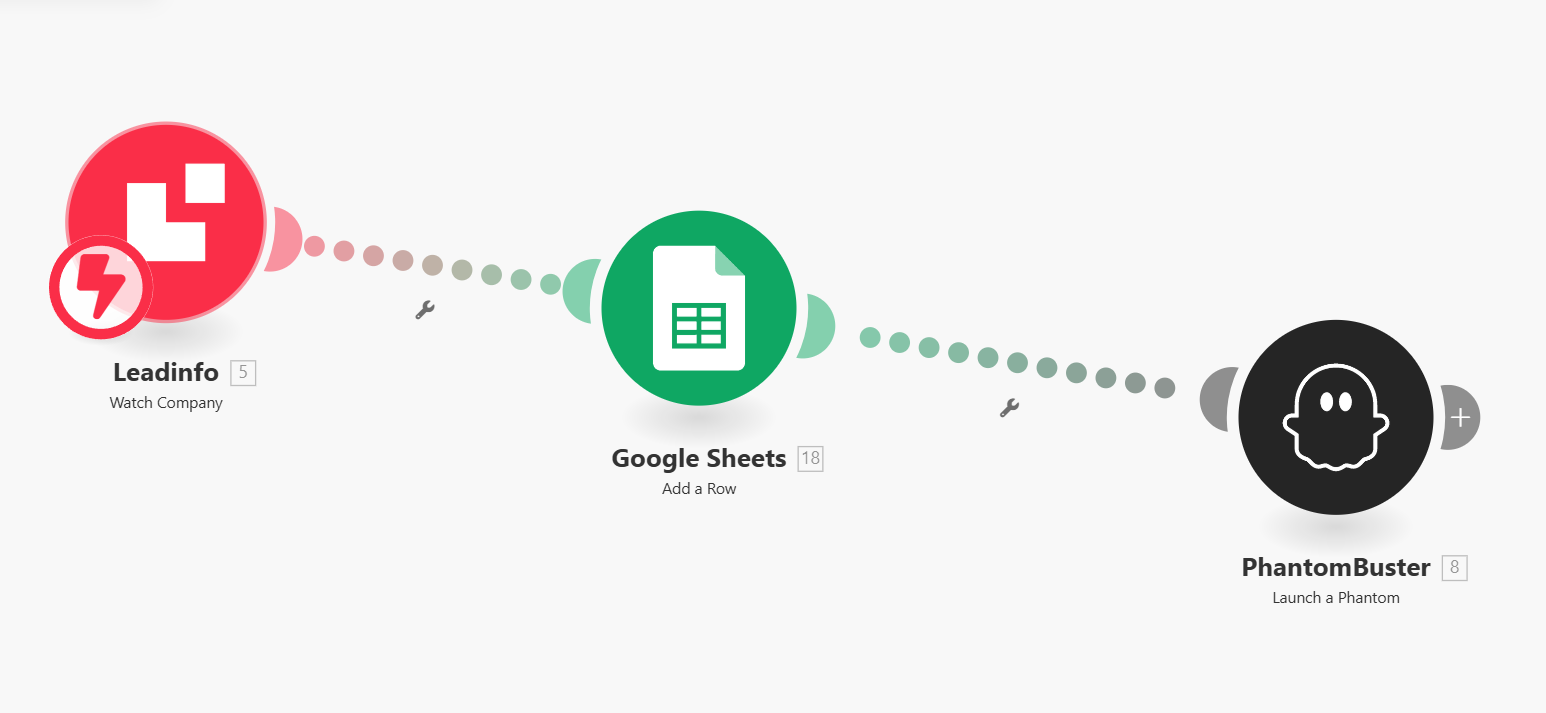
Figure 1 | First scenario in the workflow | Source: Mobile Reality's Make.com account
Step 2: Enriching Company Data with PhantomBuster and LinkedIn
The next step in our lead generation workflow involves enriching company data to make it actionable. Using PhantomBuster, we:
Collect Comprehensive Insights: Enrich leads with data like LinkedIn URLs, company growth rates, and employee numbers.
Automate Data Enrichment: By integrating this step into our generation automation workflow, we gain deeper insights without additional manual input.
Centralize Data: Updated lead details are logged in Google Sheets for quick access by our sales team.
Why it Matters: This enrichment step enhances the value of each lead, helping us prioritize outreach efforts more effectively.
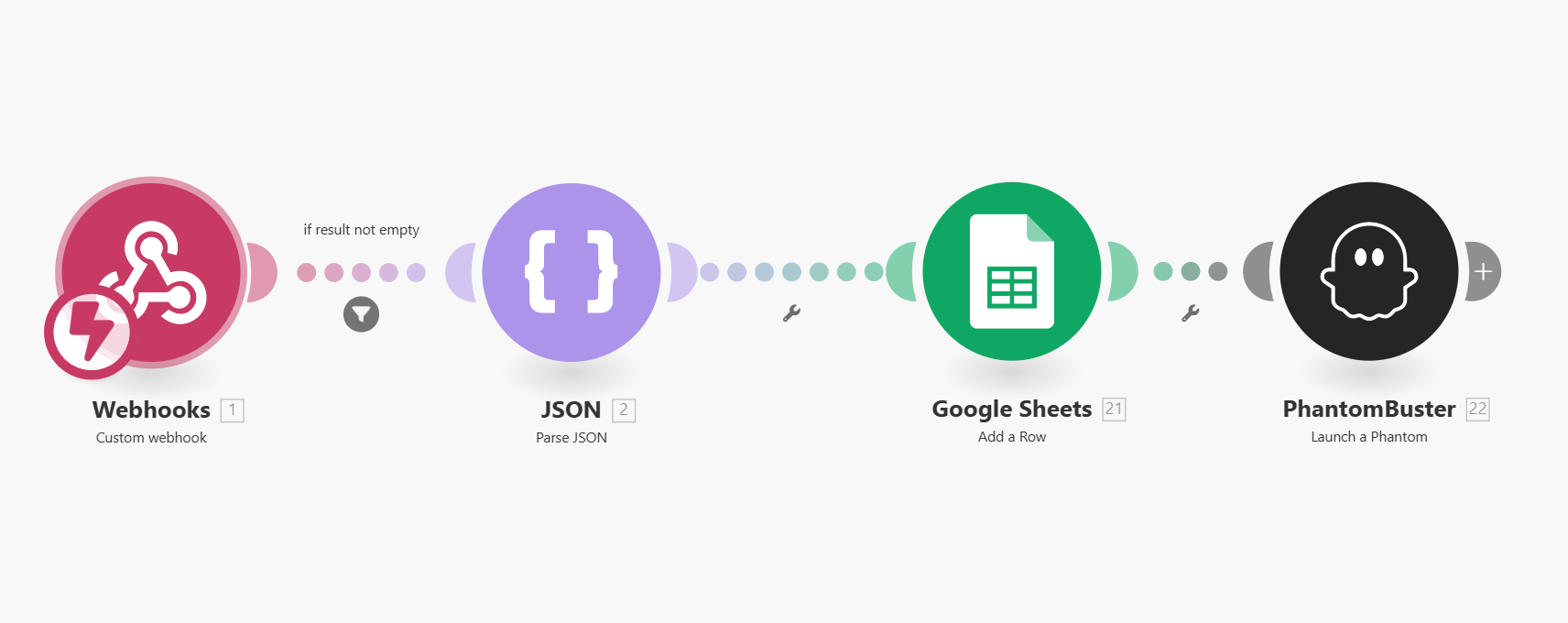
Figure 2 | Second scenario in the workflow | Source: Mobile Reality's Make.com account
Step 3: Scraping Employee Data for AI-based personalization and lead management
Personalization is key to maximizing the effectiveness of our lead generation automation. This involves:
Identifying Key Decision-Makers: A second PhantomBuster workflow scrapes LinkedIn profiles for employee data, including names, roles, and locations.
Personalizing Engagement: This data enables us to tailor our outreach to specific individuals, ensuring messages resonate with their needs.
Enhancing Efficiency: All collected employee data is automatically added to Google Sheets, ready for integration into our automated lead generation process.
Use Case: For a proptech company, we scraped the LinkedIn profiles of the CTO and Head of Innovation—critical decision-makers for software development projects—allowing us to craft targeted and meaningful messages.
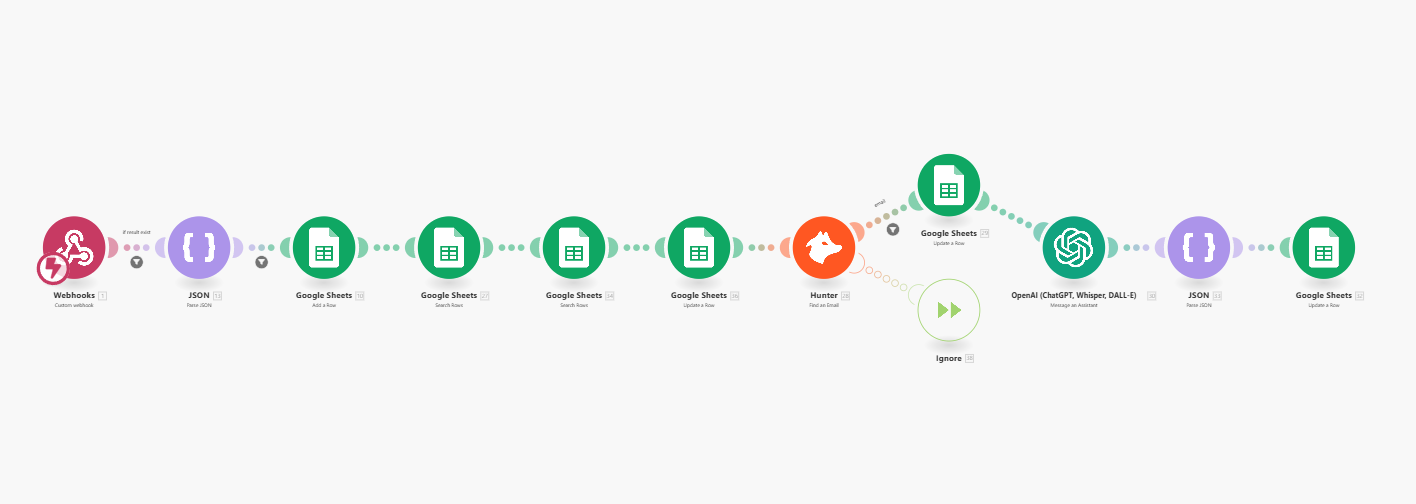
Figure 3 | Third scenario in the workflow | Source: Mobile Reality's Make.com account
Step 4: Launching Personalized Outreach Campaigns with Lemlist Email Campaigns

The final stage of our lead generation workflow is outreach. Using Google Apps Script, we send enriched leads to Lemlist for highly personalized email automation campaigns:
Industry-Specific Campaigns: Leads are segmented into categories like fintech or proptech and routed to relevant campaigns.
AI-Driven Personalization: We use tools like OpenAI to generate customized icebreaker messages and subject lines for every lead.
Automated Follow-Ups: Lemlist ensures timely follow-ups within email marketing automation, helping us maintain engagement without manual intervention.
This personalized approach exemplifies the power of automated lead generation, allowing us to scale outreach while improving response rates.
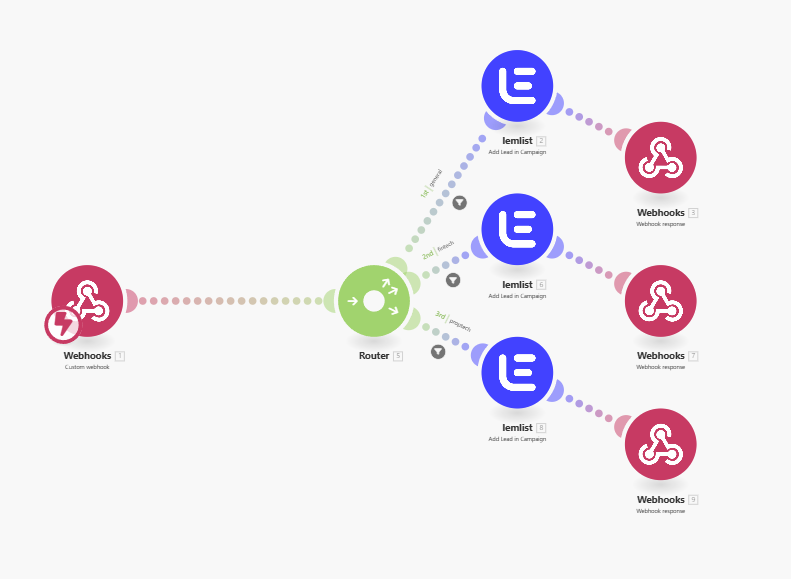
Figure 4 | Fourth scenario in the workflow | Source: Mobile Reality's Make.com account
Visualizing the Automated Lead Generation Workflow
Here’s a simplified overview of how the lead generation automation tools and process works:
Leadinfo: Captures company data from website visitors and logs it in Google Sheets.
PhantomBuster: Enriches company and employee data for deeper insights.
Google Sheets: Acts as a centralized repository for all enriched leads.
Lemlist: Automates personalized outreach campaigns and tracks engagement metrics.
All of these tools are set up inside the Make.com platform as a core automation ecosystem for us.
Results of Our Automated Lead Generation Process
Since implementing this automated lead generation strategy, we’ve seen remarkable results:
Time Savings: Automation reduced manual workload by over 50%.
Higher Lead Volume: We scaled our lead generation efforts without increasing manpower.
Better Engagement: AI-generated personalized messages boosted email open rates and responses significantly.
By combining tools like Leadinfo, PhantomBuster, Google Sheets, and Lemlist, we’ve created a seamless generation automation process that transforms how we approach lead generation.
Tools and Technologies for Lead Generation Automation
As businesses embrace automated lead generation, choosing the right tools and technologies is critical to success. At Mobile Reality, we’ve built a robust lead generation automation process by leveraging tools that work seamlessly together, eliminating inefficiencies and enabling personalized outreach at scale. Here’s a breakdown of the tools and how they support different stages of our workflow.
1. Leadinfo: Capturing Website Visitors
Leadinfo serves as the foundation of our automated lead generation system by identifying companies that visit our website in real time. This tool:
Tracks visitor behavior and captures essential data such as company name, domain, and location.
Pushes leads automatically to our workflow via a webhook.
Ensures we never miss a potential lead by automating data collection.
Why It’s Essential: Leadinfo replaces manual website monitoring with a fully automated process, allowing us to focus on converting high-value prospects.
2. PhantomBuster: Data Enrichment and Scraping

PhantomBuster is a versatile tool that drives the enrichment phase of our lead generation automation:
Scrapes additional company information like LinkedIn profiles, employee count, and growth trends.
Identifies key decision-makers by extracting employee-level data from LinkedIn, such as names, roles, and locations.
Runs automatically to ensure that enriched data is ready for outreach campaigns.
Key Benefit: By automating the enrichment process, PhantomBuster saves hours of manual research, providing us with detailed insights for personalized engagement.
3. Google Sheets and Apps Script: Centralized Data Management
At the heart of our generation automation process is Google Sheets, which acts as a centralized hub for all lead information. With the help of Apps Script, we:
Store and organize enriched lead data for easy access.
Push data to subsequent tools like Lemlist via custom HTTP requests.
Enable seamless collaboration across the team, ensuring everyone has access to up-to-date lead information.
Why We Use It: Google Sheets’ flexibility makes it an ideal platform for integrating various automation tools and managing lead data efficiently.
4. Lemlist: Personalized Outreach Campaigns
Lemlist powers the final stage of our automated lead generation workflow: targeted outreach. This tool:
Launches industry-specific email campaigns for segments like fintech and proptech.
Integrates with AI-generated icebreakers and subject lines, ensuring every email feels personal and relevant.
Automates follow-ups to maintain consistent engagement without manual effort.
Impact: Lemlist has significantly improved our email open and response rates, making it an indispensable part of our lead generation strategy.
5. OpenAI: AI-Powered Personalization
To achieve personalization at scale, we leverage OpenAI for generating:
Icebreaker Messages: Tailored opening lines based on lead data.
Custom Email Titles: Compelling subject lines designed to maximize open rates.
Content Suggestions: Messaging ideas for outreach campaigns.
Game-Changer: AI-driven personalization has elevated the quality of our outreach, allowing us to stand out in crowded inboxes.
Challenges and Solutions in Lead
While adopting lead generation automation has transformed our process, it hasn’t been without challenges. Here’s what we faced and how we addressed these issues.
1. Challenge: Data Quality
The Issue: Poor-quality data from unverified sources can lead to wasted efforts on unqualified leads. Our Solution:
Use tools like Hunter.io to verify email addresses before launching campaigns.
Implement validation filters to ensure only complete, accurate lead profiles enter the workflow.
2. Challenge: Tool Integration
The Issue: Combining multiple tools into a cohesive workflow can be complex. Our Solution:
Use Make.com as a central integration platform to connect tools like Leadinfo, PhantomBuster, and Lemlist.
Automate data handoffs between tools to eliminate manual intervention and reduce errors.
3. Challenge: Balancing Personalization and Scale
The Issue: Scaling lead generation while maintaining a personal touch is difficult. Our Solution:
Leverage OpenAI to craft personalized messages for every lead based on their data.
Segment leads by industry and tailor outreach campaigns to address specific pain points.
4. Challenge: Compliance and Privacy
The Issue: Ensuring GDPR and data privacy compliance while automating lead generation. Our Solution:
Limit data scraping to publicly available information.
Include clear opt-out options in outreach emails to respect privacy preferences.
5. Challenge: Measuring Results
The Issue: Without clear metrics, it’s hard to evaluate the effectiveness of automation. Our Solution:
Track engagement metrics like open rates, click-through rates, and responses via Lemlist.
Use analytics dashboards to measure ROI and optimize campaigns based on performance data.
Key Takeaways
By adopting tools like Leadinfo, PhantomBuster, Google Sheets, Lemlist, and OpenAI, we’ve built a streamlined automated lead generation process that tackles these challenges effectively. The result? Faster lead qualification, improved engagement, and scalable growth.
In the next section, I’ll explore how this end-to-end system has delivered measurable results for Mobile Reality and why generation automation is the future of lead generation.
Results and Benefits of Automated Lead Generation
Implementing automated lead generation at Mobile Reality has been a transformative experience. By replacing manual processes with lead generation automation, we’ve unlocked significant efficiency gains, improved personalization, and scaled our lead generation efforts without increasing manpower. Here’s a closer look at the measurable results and key benefits we’ve achieved.
1. Time Saved Through Automation
One of the most immediate and noticeable benefits was the time saved by automating repetitive tasks. Here’s how:
Data Capture: Tools like Leadinfo and PhantomBuster reduced the time spent gathering lead information by over 50%.
Personalization: AI-generated icebreakers and email subject lines allowed us to craft targeted messages in seconds, a task that would have previously taken hours.
Workflow Efficiency: Centralizing data in Google Sheets and automating its flow to Lemlist eliminated the need for manual updates.
Key Stat: Our sales team now spends 70% more time engaging with qualified leads rather than performing administrative tasks.
2. Increase in Lead Volume
With generation automation, we’ve significantly scaled the number of leads we capture and process:
Website Visitors: Leadinfo ensures that we capture and analyze 100% of website traffic from potential clients.
Qualified Leads: Enrichment tools like PhantomBuster have increased the volume of qualified leads by 40%, as we now identify key decision-makers and their roles effortlessly.
Industry-Specific Targeting: By segmenting leads into categories like fintech and proptech, we’ve improved the relevance of our outreach, resulting in a higher proportion of actionable leads.
3. Enhanced Personalization and Engagement
Personalization was a major challenge with traditional methods, but automated lead generation has changed that:
AI-Driven Personalization: Using OpenAI, we generated tailored icebreaker messages and email subject lines for every lead, ensuring that our outreach resonated with their needs.
Improved Email Metrics:
Email open rates increased by 35% due to personalized subject lines.
Response rates grew by 20%, as recipients engaged more with tailored content.
Follow-Ups at Scale: Lemlist's automated follow-ups ensured consistent engagement, keeping leads warm without requiring manual effort.
4. Scalability Without Increasing Resources
Before automation, handling a growing pipeline of leads required additional manpower. With lead generation automation, we’ve achieved scalability without increasing headcount:
Handling Larger Volumes: Our workflow can process thousands of leads monthly, compared to just a few hundred before automation.
Adaptability: The system scales seamlessly across different industries, allowing us to target fintech, proptech, and entertainment clients with the same efficiency.
5. Smarter, Data-Driven Decisions
Automation not only streamlined processes but also provided valuable insights that informed our strategy:
Lead Scoring: By analyzing company size, industry trends, and employee roles, we prioritized high-value leads, increasing our conversion rates.
Campaign Optimization: Metrics from Lemlist (e.g., open rates and response data) allowed us to refine our outreach strategy, improving ROI.
Strategic Growth: Insights from our enriched lead data guided us in targeting new markets like proptech, where we’ve seen significant success.
Key Outcomes
Since adopting automated lead generation, we’ve seen tangible improvements in our sales pipeline:
50% Time Saved: Automation reduced manual tasks, allowing the team to focus on high-impact activities.
40% More Qualified Leads: Enrichment workflows increased the quality of our leads.
35% Higher Open Rates: AI-driven personalization made our emails more effective.
Scalable Growth: We’re now handling larger lead volumes without scaling costs.
Why Automated Lead Generation is the Future
These results highlight the immense potential of generation automation for businesses like ours. By integrating tools like Leadinfo, PhantomBuster, OpenAI, and Lemlist, we’ve not only solved long-standing challenges but also built a scalable, efficient, and highly personalized lead generation system.
Whether you’re struggling with inefficiencies or looking to scale, automated lead generation is no longer optional—it’s a necessity for businesses aiming to stay competitive in today’s market.
Conclusion
As the CEO of Mobile Reality, I’ve witnessed firsthand how automated lead generation can transform the way businesses approach their sales pipeline. What once felt like an uphill battle—managing the inefficiencies of traditional methods and struggling to scale—has now become a streamlined, efficient, and highly impactful process thanks to lead generation automation.
By leveraging tools like Make.com, Leadinfo, PhantomBuster, Google Sheets, OpenAI, and Lemlist, we’ve built a system that doesn’t just save time but also ensures better targeting, personalization, and results. This generation automation process has enabled us to focus on what truly matters: building meaningful relationships with potential clients and driving growth.
For any business looking to overcome the challenges of manual lead generation and scale their efforts without overburdening their team, adopting automated lead generation is no longer optional—it’s essential. Whether you’re a startup exploring new markets or a seasoned organization looking to optimize, automation can unlock new opportunities and efficiencies that were previously out of reach.
I hope our experience and insights inspire you to rethink your lead generation strategy and explore the transformative power of automation. If you’re ready to take the next step or need guidance on implementing your own lead generation automation system, don’t hesitate to reach out—I’d be happy to share more about what’s worked for us and how you can apply it to your business.
SaaS Business Insights
The SaaS industry is ever-evolving, with new trends, technologies, and challenges emerging continuously. At Mobile Reality, we delve deep into the intricacies of SaaS business strategies, offering insights and expert guidance. We invite you to explore our comprehensive articles that cover a wide range of SaaS-related topics:
- Overcoming the Significant SaaS Challenges
- Elevate Your SaaS Strategy with Top SEO Tools
- SaaS Architecture Guideline: Multi Tenant vs Multi Instance
- PoC vs MVP: Uncovering the Critical Variances
- Mastering Software Development Estimation Techniques
- Maximizing Revenue: App Monetization Strategies
- Elevate Your Tech Strategy with a Fractional / Time CTO
These resources are curated to expand your knowledge and support your decision-making in the SaaS sector. Mobile Reality is recognized as a leader in SaaS development, providing cutting-edge solutions for various businesses. If you're considering expanding your SaaS capabilities or need expert guidance, contact our sales team for potential collaborations. Those interested in joining our dynamic team are encouraged to visit our careers page to explore exciting opportunities. Join us as we navigate the dynamic world of SaaS business!



